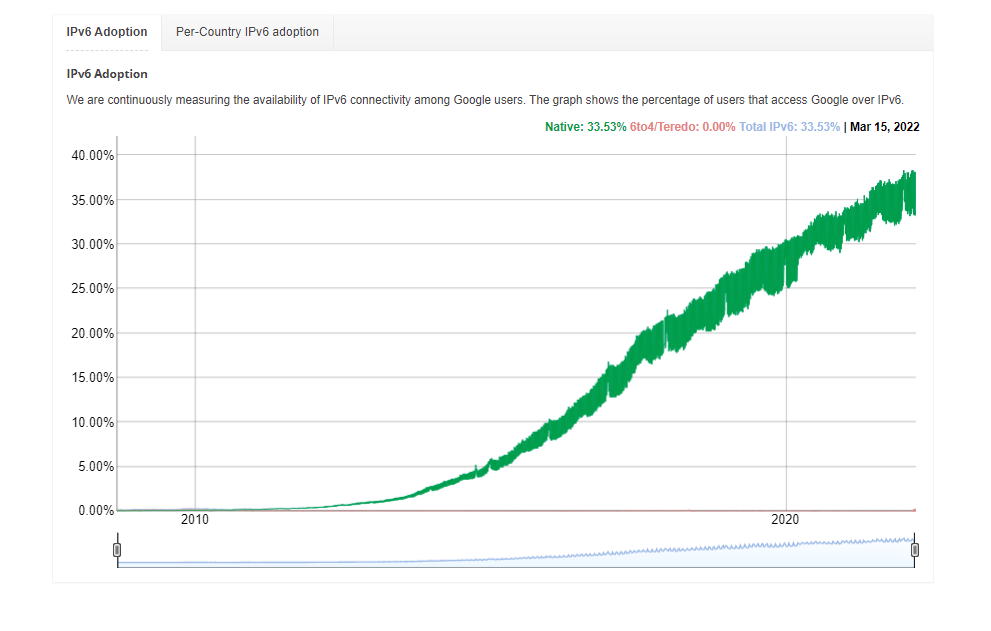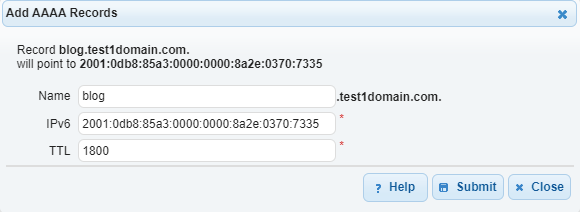Behind every domain name, there is a numerical IP address. And behind every IP address is a DNS record. In a previous blog, I discussed A records, which uses the Ipv4 protocol. Today, I’ll be covering their fraternal twins—AAAA records and IPv6.
What is an IPv6 Address?
At its core, IPv6 is very much like IPv4, but there are some key differences. IPv6 is the 6th version of the internet protocol. While it provides unique IPs for devices, IPv6 uses 128-bit IP addresses. Unlike IPv4, which is a 32-bit address and has limited availability for unique IPs, IPv6 has a near-infinite IP capacity—up to 340 undecillion addresses. That’s 36 zeros or three sets of 12 zeros. However you want to look at it, even at the extremely rapid pace at which new domains are created every day, we’ll be hard-pressed to exceed that limit.
Along with capacity, other benefits of using IPV6 are that:
- Eliminates Network Address Translation (NAT)
- Eliminates the need for DHCP
- Supports auto-configuration
- Better multicast routing
- Prevents private address collisions
- Built-in privacy
- Authentication support
- More flexibility than IPv4
- Simplified headers
With all that in mind, it makes you wonder why IPv6 isn’t already the standard protocol. After all, it was created in 1998 and specifically designed to solve the issue of limited IP addresses, which has been a growing concern over the years. And while supported by most providers and networks, it’s yet to be widely adopted. One of the reasons stopping widespread implementation is cost and compatibility, but also NAT, as this technology was able to extend the life of IPv4 and is relatively inexpensive. But NAT is really just a bandaid. As of March 15, 2022, 33.53% of users access Google over IPv6. So eventually, IPv6 will become the gold standard of internet protocols out of necessity, if nothing else.

Did you know?: There was an IPv5, but it never caught on. It was designed to be a streaming protocol but used the same addressing type as IPv4.
IPv6 Address Example
Visually, the difference between IPv4 and IPv6 addresses is night and day. Here’s an example of each:
IPv4 → 192.0.2.0
IPv6 → 2001:0db8:85a3:0000:0000:8a2e:0370:7334
What is a Quad A (AAAA) Record?
Just like IPV4 and IPv6 share overall core functionality, so do A and AAAA records. The only difference between these record types is that they can only be used for that specific protocol. You can’t create a AAAA record using an IPv4 address or vice versa. Just like A records, AAAAs can point to the root of your domain or to a subdomain. They can also be used simultaneously.
AAAA Record Examples
Here are some examples of how AAAA records look in DNS Made Easy:
AAAA record that maps to the root of the domain

AAAA record that maps to a subdomain

Standards For the Future: AAAA Records and IPv6
Unless something new and shiny comes along, IPv6 and AAAA records will become the norm and eventually replace A records and IPv4 altogether. Considering the reluctance of companies to adapt to IPv6 and the technologies like NAT that keep breathing a little extra life into IPv4, it may still be a while. But if the trend of rapidly growing websites continues—175 new websites created every minute—IPv4 won’t be able to survive forever.
If you enjoyed this article, share it with a friend or coworker and help them learn more about DNS!
